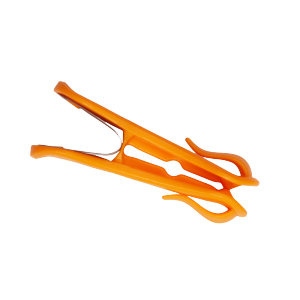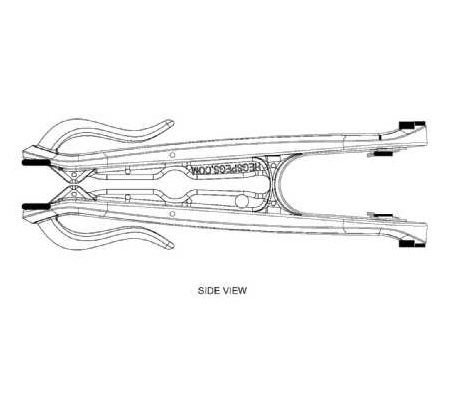In this case study, we look at how I used the overlap of patents, designs and trade marks to protect a commercially valuable but simple invention, the clothes peg.
In its simplest form, this clothes peg is clothes peg with a hook which provides advantages in the way you hang your clothes. You might have seen of the shop shelves, it looks like this:
Patent protection
Patent protection is obvious choice to protect inventions. Patent protection provides the most potent form of protection available. Generally, it is much harder to work around a patent and a patent gives much broader scope of protection as compared to other intellectual property rights such as designs, trade marks and the like which we will discuss below.
Patent protection provides the most potent form of protection available.
As such, for this invention, I filed for the inventor a provisional patent application and the subsequent PCT patent application PCT/AU2013/001457.
However, for simple type inventions such as the present case, there is always a danger that the examiner would say that the differences between the invention and what has been done before is obvious. Specifically, in order to obtain patent protection, one needs to meet the requirements of both novelty and inventive step. Novelty is a question of fact, but when it comes to inventive step, the examiner considers whether the differences would have been obvious to the person skilled in the art. For simple mechanical type inventions such as these, there is always a danger that the examiner would say that the simple mechanical differences are obvious.
When faced with an obviousness objection from the examiner, one can sometimes overcome the objection by way of argument. If that doesn’t succeed, one can sometimes “drop down” to the utility model patent which is available in many countries around the world, including in Australia, by way of the innovation patent. Not all countries support the utility model patent however, most notably the US.
As such, because the present invention was commercially valuable to the client, I recommended the additional form of protection in the form of design protection. As such, if, down the track, we weren’t able to argue out of an obviousness rejection, and we weren’t able to drop down to a utility model patent in a particular country, we could then rely on the design registration rights.
Design Protection
In contradistinction to patent protection which protects the way something works, design protection protects the visual characteristics of a design. You may obtain design registration for any new and visually distinctive visual characteristic of a design which may include the shape, configuration, pattern or ornament of something handmade.
Whereas patent protection protects the way something works, design protection protects the way something looks.
Ideally, one would file the complimentary design registration at the same time as the filing of the patent application. However, in certain instances, there may be advantages in delaying the filing of the design registration because of the early publication of the design registration as compared to the patent application.
When filing a design registration, one must submit exemplary representations of the design in wireframe format. Ideally, one submits six views comprising three elevation and three perspective views. At the same time, one can include a statement of newness and distinctiveness which draws attention to those visual characteristics deemed to be visually distinctive by the applicant. Below is a sample image from the design registration for the present clothes Peg design.
Once having filed the Australian design registration application, one has six months in which to file corresponding design registration in other countries too, such as the US. Note that for designs, the period is six months, whereas for patents the period is 12 months. This is known as the Paris Convention period.
Below is a screeshot of one of the images from the design registration application for the Clothes Peg:
Summary
As is evident from the above, IP rights often times overlap and can be used as an effective tool for providing complementary forms of protection, especially for simple yet commercially viable products.


